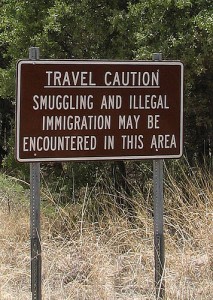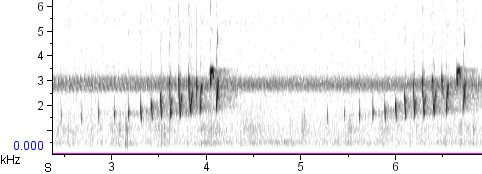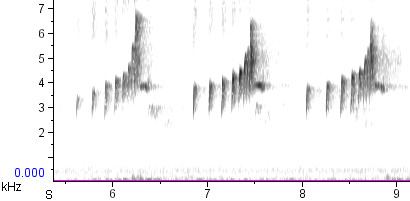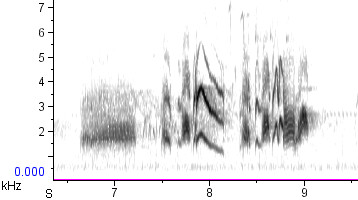You Misidentified It Wrong

The Buff-collared Nightjar is a little-known but highly-sought bird from Mexico that can be found in some of the remote canyons of southernmost Arizona. Seeking this nocturnal rarity can feel like a real adventure. On your way to look for it, you’re guaranteed to pass a sign warning you of terrible dangers, intended to dissuade you from wandering around in the lawless border country lest you meet humanity’s worst elements alone in a dark arroyo.
But the dark arroyos of this remote wilderness are precisely where you must venture if you want to hear the remarkable song of the Buff-collared Nightjar, an evocative rising, bubbly, knocking series that some in Mexico transliterate as préstame tu cuchillo, “lend me your knife” — one of the phrases birders most want to hear from any bird (and, presumably, one of the last phrases they want to hear from a shadowy human figure lurking in the dark thornscrub).
The song of the Buff-collar is so unique that it would seem impossible to mistake for any other bird. But in fact, in the predawn darkness in the very same canyons where the nightjar lives, a strikingly similar sound is often heard from a different bird — a flycatcher that begins its dawn song long before most birders expect day birds to be singing. Over the years, many reports of singing Buff-collared Nightjars have turned out to be flycatchers instead.
According to the classic 1964 publication Birds of Arizona by Phillips, Marshall, & Monson, the source of the nightjar-like dawn song is none other than Cassin’s Kingbird. And this assertion has been repeated by many subsequent credible sources, including Joe Morlan, Kenn Kaufmann (in both North American Birds and in Kingbird Highway), the Arizona Bird Records Committee, the BNA account of Cassin’s Kingbird, and even the Sibley Guide to Birds.
The only problem is, Phillips et al. were mistaken. The dawn song of Cassin’s Kingbird sounds nothing like a Buff-collared Nightjar. It’s the dawn song of Vermilion Flycatcher that causes the confusion. To wit:

(click here for audio)


(click here for audio)
You can see the resemblance between the first two songs on the spectrogram. Of course there are differences: Vermilion Flycatcher’s dawn song is faster and higher-pitched than Buff-collared Nightjar’s song, with a different tone quality. But the similarity in overall pattern is quite striking.
If you’re having difficulty seeing the similarity between Cassin’s Kingbird dawn song and the first two, that’s because it’s completely different. The spectrogram looks nothing like the others, and the song doesn’t sound anything like the others either. And as far as I can tell, nothing else in Cassin’s repertoire comes any closer to resembling the nightjar. However it happened, it looks to me like Phillips et al. named the wrong bird as the confusion species for Buff-collared Nightjar, and most other authors have followed suit for 45 years.